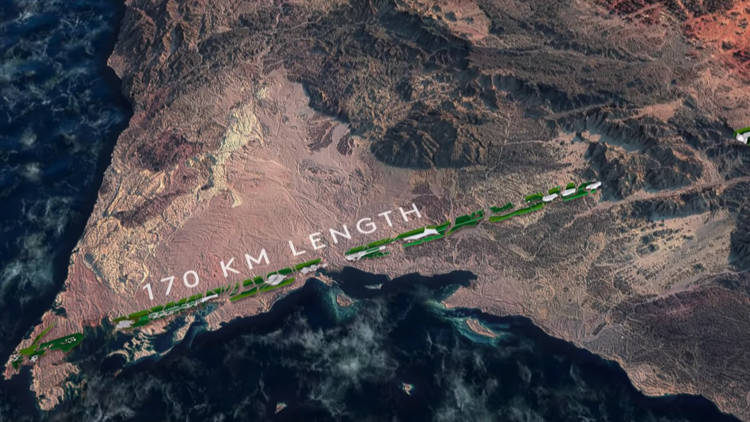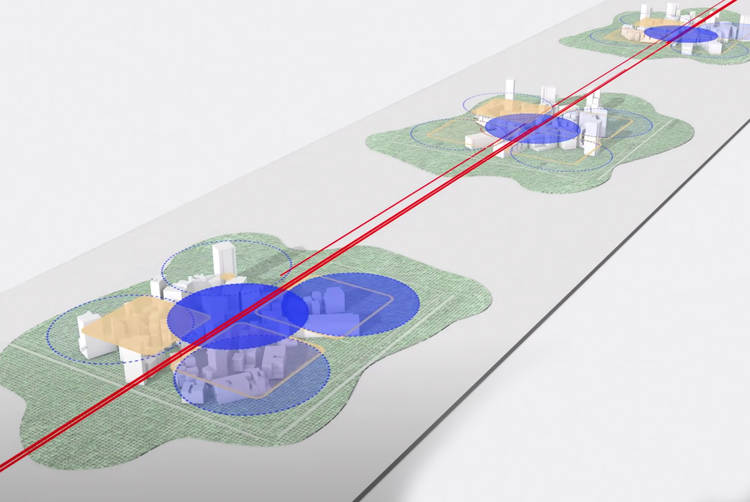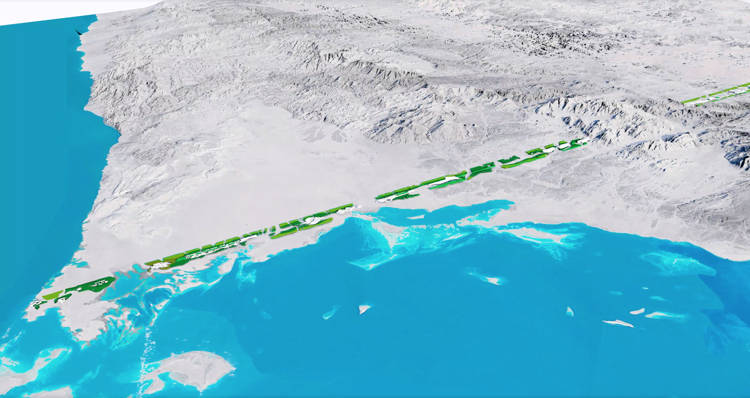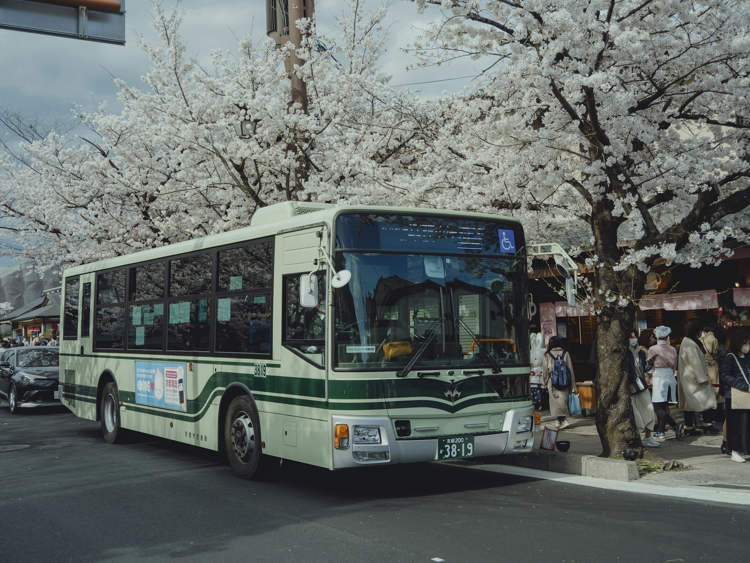In early 2021 Saudi Arabia’s Crown Prince unveiled the concept of a futuristic urban development called The Line, which basically consists of a linear, 170-km-long city without roads of cars and built around nature.
During his presentation of The Line, back in January, Prince Mohammed Bin Salman described the future smart city as a direct response to growing challenges like human congestion, pollution, traffic and outdated infrastructure. Linking the coast of the Red Sea with the mountains and upper valleys of the north-west of Saudi Arabia, The Line will be powered by Artificial Intelligence (AI), continuously learning predictive ways to make life easier for both residents and local businesses. It will be powered by 100% clean energy and will feature an underground hyper-speed transportation system, instead of roads and cars.

“Why should we sacrifice nature for the sake of development? Why should seven million people die every year because of pollution? Why should we lose one million people every year due to traffic accidents? And why should we accept wasting years of our lives commuting?” the Crown Prince asked during his presentation of The Line.
“Therefore, we need to transform the concept of a conventional city into that of a futuristic one … Today, as the Chairman of the Board of Directors of NEOM, I present to you THE LINE. A city of a million residents with a length of 170 km that preserves 95 percent of nature within NEOM, with zero cars, zero streets and zero carbon emissions.”

Mobility is a big part of this futuristic urban development, with plans for all daily services to be within 5 minutes walking distance of each node on the line, and the longest journey within the 170-km-long city expected to take no longer than 20 minutes.
The mere thought of a linear city stretching for 170 km in the middle of the Saudi Desert, with no roads or cars, but a futuristic underground transportation system faster than anything currently available sounds more like a dream than a feasible project, and many infrastructure experts tend to agree.

It’s in the nature of human communities to grow and sprawl outwards, so keeping The Line linear will require a great deal of regulation, which will be very difficult to enforce. Then there is the matter of transportation, with current technology unable to rise to the demands of The Line. In order to reach one end of the 170-km-long city from the other in 20 minutes would require a speed of 318 mph (512 km/h), which is far beyond the top speeds of current high-speed rail systems.
Hyper-loop system may one day evolve to a point where 318 mph is an attainable speed, but current tests have topped out at 288 mph (463 km/h) without passengers. Not to mention that hyper-loop technology is at least a decade away from real-world implementation.
“The history of so-called megaprojects is not pretty. Usually, they don’t quite turn out the way the original visionaries intend, they often fall prey to economic conditions or other people’s ideas of what should happen, or they wind up costing vastly more than expected,” Stephen Wheeler, a landscape architect and environmental design professor at the University of California, Davis, told Live Science.
There is no denying that The Line is one of the most intriguing and exciting infrastructure projects the world has seen in a long time, but despite its flashy presentation, making it a reality is going to be a massive challenge. Construction is set to get underway in the first quarter of this year.






